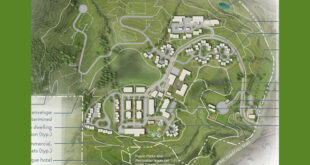Widespread successes, future plans
By Aimee Eaton
Labor Day has come and gone. The leaves are changing, temperatures are dropping, and while there are still trails to be ridden and hikes to be hiked, summer in the upper valley is rapidly coming to an end.
With the change of seasons brings a wrap-up of the programs and efforts undertaken in the last few months to preserve and conserve area trails and public lands.
Two crews, more than 1,000 pounds of
garbage, dozens of trails
The Crested Butte Conservation Corps, the golden child of the Crested Butte Mountain Bike Association, kicked off in June as a “full-time, six-day-a-week, on-the-ground trail crew aiming to minimize impacts, protect our valuable resources, and steward it for the best experiences possible.”
The CBCC was fielded by two crews of three people. Each crew worked to maintain and build trails, clear garbage and litter, talk with visitors, create signs and educational opportunities and enhance visitor experience in the backcountry.
“I would say it was a great success,” said CBMBA executive director Dave Ochs of the Conservation Corps’ first year in the field. “Not just the smiles, the ‘thanks,’ or the high fives the crews got all the time, but the random comments from so many saying how the trails are in the best shape ever, drainages/trailheads are cleaner, signage has worked, and for the most part users seem to be friendlier or people are heeding more respect.”
Throughout the summer, the CBCC removed more than 1,000 pounds of garbage from the backcountry. Several hundred pounds of that trash came from remote drainages with minimal access to motorized vehicles. According to Ochs, crew members drug out, often by hand, old furniture, a barbeque grill, random car parts, abandoned camping gear, household garbage, piles of human waste including used toilet paper, and all other types of trash specific to the human condition.
In addition to cleaning up the backcountry, the CBCC worked to help minimize future damage by acting as educators and mentors focused on teaching appropriate backcountry use and trail etiquette.
“Many visitors and guests were very eager to find out what these crews were doing and how the program worked, and to ask them questions about use, access, etiquette, etc.,” said Ochs.
“I think that ‘respect’ was evident this year. Besides the bad apples, and there will always be bad apples, I think there was a better respect and more empathy towards different users,” he continued.
Ochs said one of the biggest challenges the CBCC encountered over the summer was related to dispersed camping and the enforcement of new United States Forest Service regulations that dictated where dispersed camping could and could not occur. The CBCC worked with the USFS to educate campers about the regulations, and the decision by the agency to number and designate appropriate areas for dispersed camping in the Kebler, Slate, Washington Gulch, and Gothic corridors.
Another challenge was just the upper valley itself, said Ochs.
“Mama Nature came in guns blazing at first,” he said of the rapid snowmelt and furious weather that occurred in late spring and early summer. “So much was coming online at the same time as snow receded, but we just have to take that in stride. We did our best to protect and preserve what so many of us love—our precious natural resources and open space.”
The CBCC will continue to work in the field through the first week in October, and Ochs said the crews would be back next summer.
“CBMBA will always be proud to do CBCC type of work in any capacity, even when the work crews are done for the season,” he said. “We have always taken great pride in volunteer time and efforts within the organization to steward not just trails, but our backyard and we will always continue to do so.”
Volunteers, swag, smiles
While the CBCC focused much of its efforts on the tangibles of backcountry protection and management, Mountain Manners with its Peak Protectors program worked to create a team of trained volunteers to serve as ambassadors and relationship builders.
“We trained 35 volunteers as Peak Protectors, including members of the USFS, BLM, and NPS,” said Peak Protectors programming director Gillian Rossi. “We worked with WSCU to host five undergraduate interns who worked with us on social media, presenting programming, and Peak Protecting.”
The Peak Protector volunteers spent time at popular trailheads and on the trails, speaking with visitors about Leave No Trace practices and backcountry protection.
“Our strategy focuses on starting the conservation conversation,” said Rossi. “Our volunteers were absolutely amazing this summer and I cannot wait to tally all of the interactions and share with the valley how many contacts they were able to make. It takes a lot of courage to strike up a conversation with a complete stranger, especially if that stranger is doing something less than Leave No Trace.”
In addition to the conversations held by Peak Protectors, Rossi said Mountain Manners staff also presented programming on responsible recreation for the Gunnison and Crested Butte libraries, the Crested Butte Development Team, the Crested Butte Wildflower Festival, Western State Colorado University, the Coldharbour Institute, and the Headwaters Alliance in Creede, Colo.
Rossi added that Mountain Manners has also worked to gain a presence in area festivals, in regional and state tourism centers and on several travel websites.
While Mountain Manners is continuing to develop a plan for the future, Rossi said she has been contacted by Travel Crested Butte and CBMR about developing a set of winter Mountain Manners and by the USFS to assist in developing a set of written Mountain Manners for hunters.
 The Crested Butte News Serving the Gunnison Valley since 1999
The Crested Butte News Serving the Gunnison Valley since 1999


